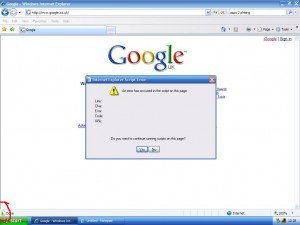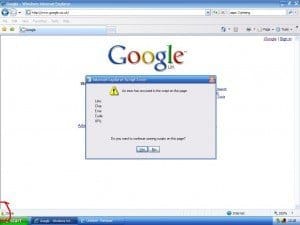10 things to be careful with when making a website


We all know that design is the first thing to attract users to a site. Depending on the success of the design, the other parts can work for sure. Whether it is your e-commerce site to showcase and sell the products or a site through which you provide various services, the design has to leave a mark in the minds of the users.
So when making your website keep in mind a couple mishaps that can detour your website and visitors. Here are the top ten website-building mistakes we see most commonly.
1. Browser compatibility: The first and vital mistake that may have a deep impact is the compatibility of the design in several browsers. It is found that either for the lack of experience of the designers or for your hurry the designs are not made compatible to all the popular browsers. Mainly “Internet Explorer”, one of the most used browsers, creates design break issues. So whatever hurry you are having, do not forget to make the design of a web page browser compatible. Otherwise, users will have a bad impression of your website; being irritated, they may not return again.
2. Splash page: Try to avoid having a splash page (introductory page) for your website. Remember whatever beautiful the ‘intro’ is, it takes time and visitors have less time in their hands (just 30 seconds in general). They may not push the “skip” button and enter your site to see more relevant information! So concentrate or let the designers put effort into the design of the home page.
3. The color: In whatever structure a web page is designed, it has to have the sober color in use. Otherwise, the highly glossy or gloomy colors may irritate the viewers. Do not try to force your personal taste of colors on the site; better try to go by the purpose of the site. In other words, there is some specific match of colors according to the convention of the designs; say the ‘sky blue’ for corporate, ‘red’ for medical purposes, the multi colors for the fashion business, etc. The color depth and glossiness should not poke the eyes.
4. Animations and JavaScripts: For making a site interactive designers tend to use animations. The animations may be Flash, javascript, 3D, etc. But remember the excessive use of things should not become a bar against the overall performance of the site. Many times JavaScripts are blocked by several browsers while Flash players may not be present in users’ machines; even larger 3D and Flash files take time to load and users see the blank pages! These create bad impressions in visitors’ minds.
5. Missing contact info & irritating forms: It is very much necessary that the websites prominently put the contact information in proper places. The visitors do not have so much time to find out the contact info; rather they should find it prominent in front of their eyes. Sometimes the contact forms are long and do not work properly and users feel bored filling them up. So you must check out that the contact information is well displayed and several forms are well designed and not long for sure.
6. Irritating Advertisements: It is evident that advertisements are needed for sure on a web page. They bring revenue to the owners of the sites. But does it mean that ads have to irritate the viewers with their wrong placements? Sometimes in the layout structures the ads are misplaced among the valuable information or they are paneled in a way that viewers feel irritated. So try to instruct the designers or understand that proper placements of the ads and relevancy with the page information are a must.
7. Navigation and link: It is more than necessary that the page navigation menus are nicely designed and the links are properly clear to the visitors. Many a time it is found that designers forget to design the navigation menus properly or use lengthy dropdowns. On the other hand, the links are designed as images (not texts) which creates a problem for search robots in crawling your links. Even when there are some links in the body texts the colors of those do not change on clicking to help the visitors understand the visited links. These mistakes somehow may mislead the visitors. Try to avoid these.
8. Frames and scrollers and fixed width: Sometimes just for the enhancements of the design the frames are used or for fixed width horizontal scroll bars appear on the user machines. Do you think the users have time to scroll horizontally to know your hidden information? No, many a time they avoid these things. So try to convert your fixed-width layouts into liquid layouts (100% to fit all the windows) and do not use frames.
9. Fonts and text format: Most of the time it is found that the designers do care to use lightweight images and graphics but do not care about the font size, type, and text formats. Due to fixed font size or type the viewers feel uneasy about reading the information. At the same time, there should not be the use of any font family that is not commonly available in user computers. Tyr to always keep the Ariel, Verdana, and Tahoma as default. Again you should look into the paragraph format of the texts. The text should not be in long paragraphs. The bulleted texts and small paragraphs help users understand your business motto.
10. Pop-ups and new windows: Last but not least is the unnecessary use of the pop-up and opening of the new windows for explanation purposes. Generally, in many cases, the pop-ups are blocked in user machines and when users are provided with new windows, they either tend to see those or forget to come to the main pages. So your designs have to use “page refresh” on the same window the users have landed.



